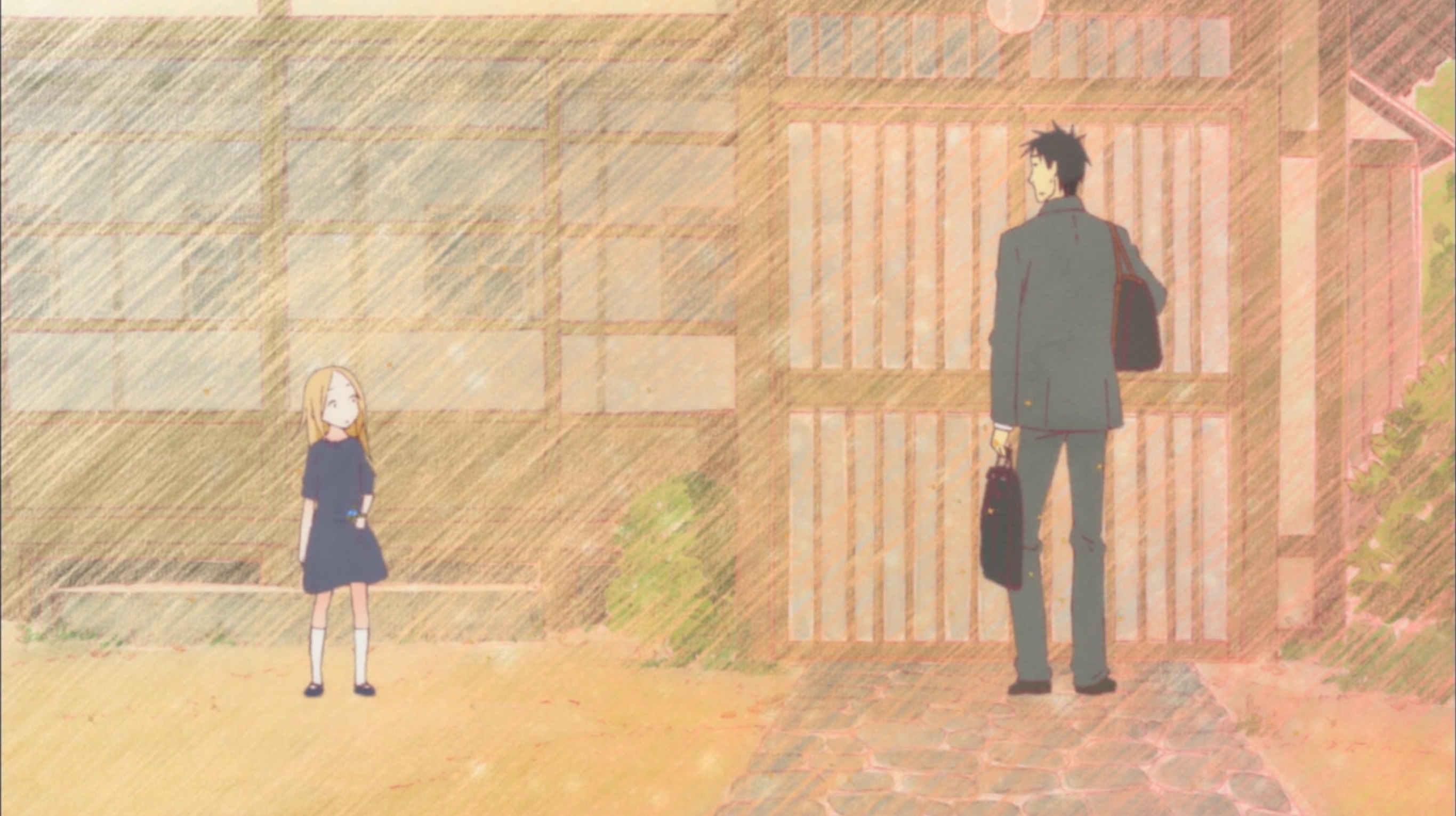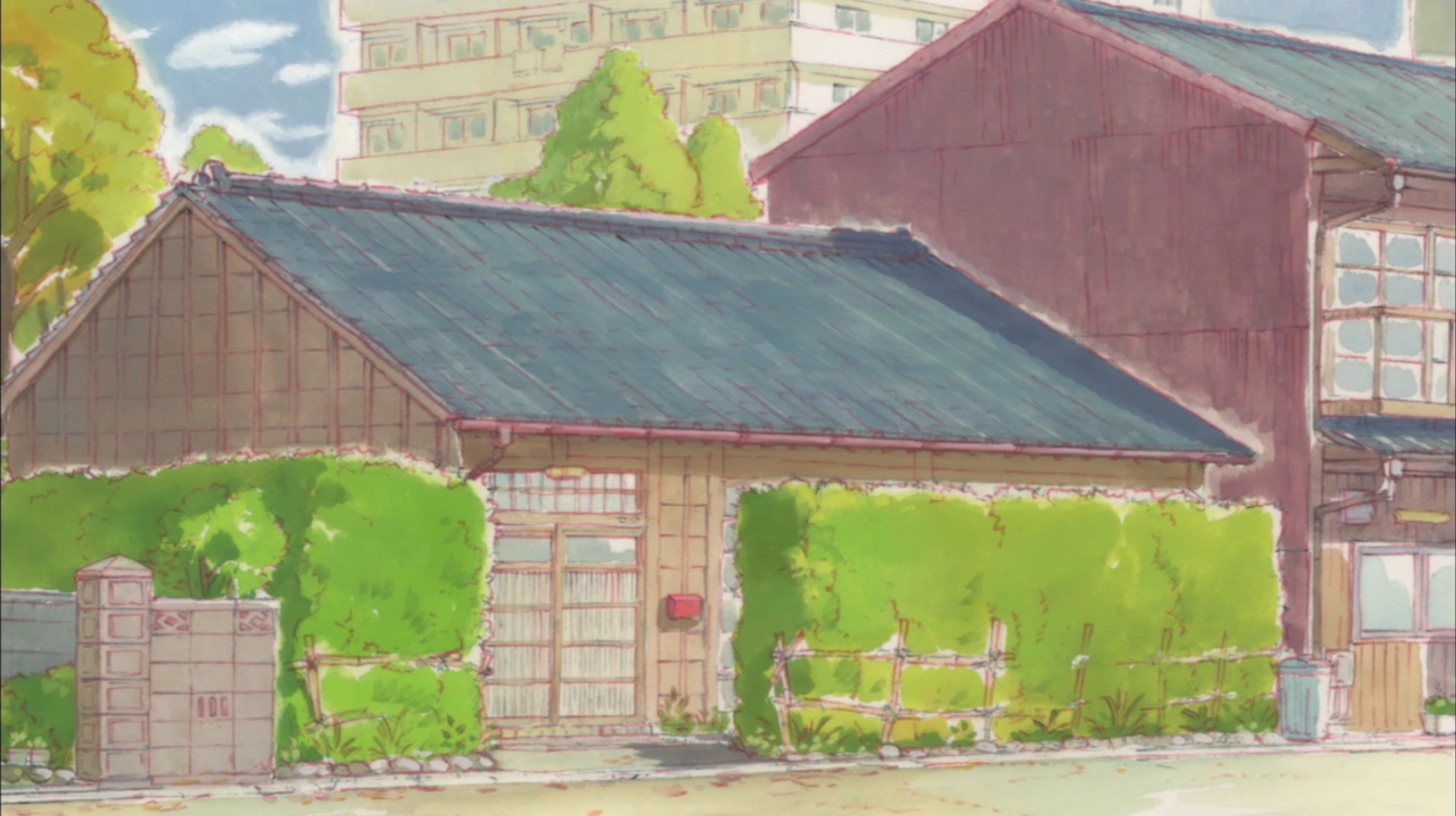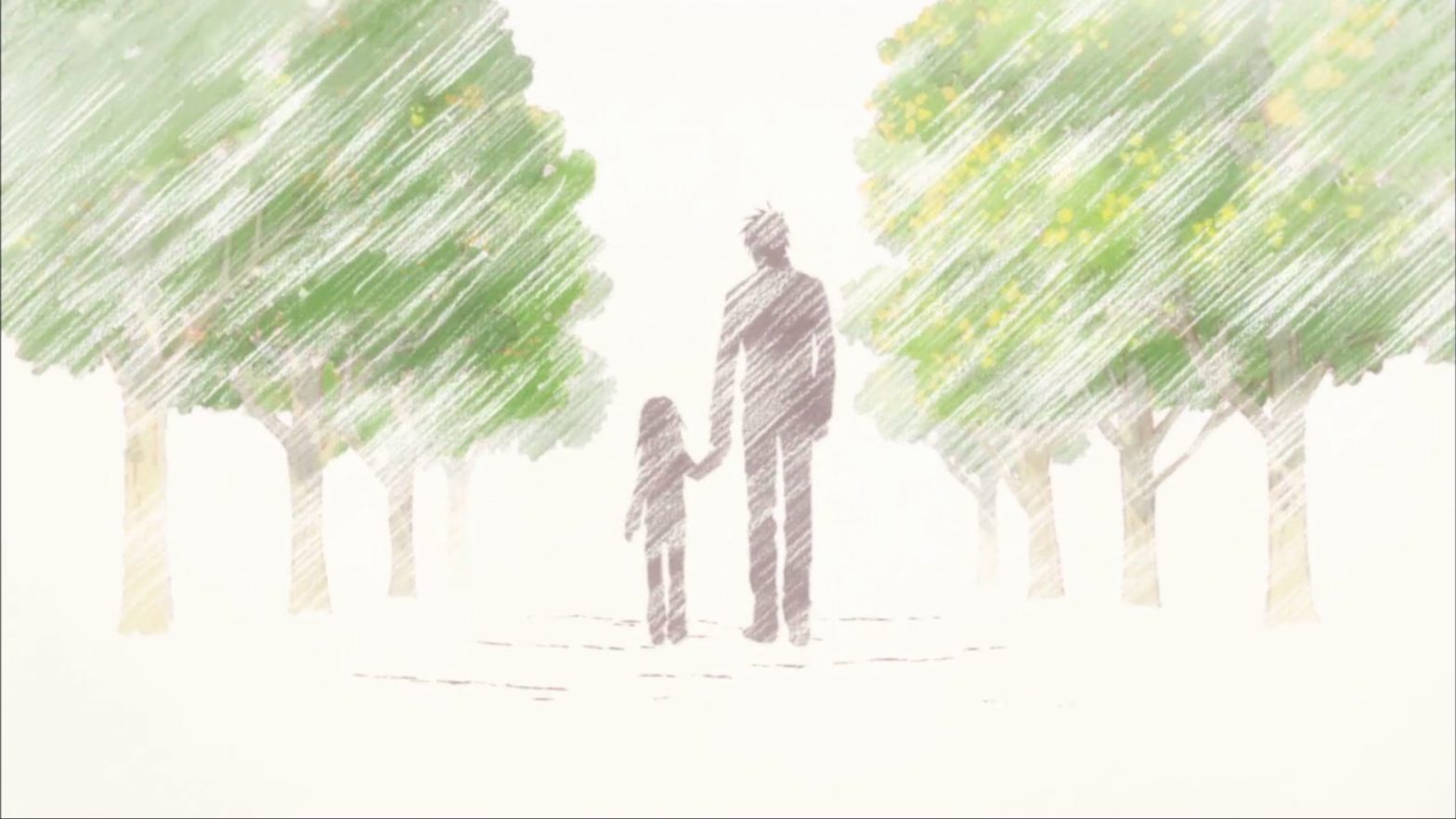Usagi Drop is a 2011 adaptation of a manga of the same title written by Yumi Unita. The series is distinctly slice of life focusing on the everyday life of Daikichi Kawachi and Rin Kaga. The story itself begins when Daikichi goes to his grandfather’s old home to meet with the rest of the family who intend to divide the grandfather’s belongings in the wake of his recent death. At the family home, Daikichi meets Rin who apparently is his grandfather’s illegitimate daughter. Overhearing his relatives dismissing the young six-year-old and refusing to take her into their care, the jobless Daikichi takes it upon himself to claim the child and take care of her.

The plot follows the everyday interactions of Daikichi and Rin in a rather light tone. The strength of this slice of life anime is that it really delves into the interaction between the two highlighting the fact that both Daikichi and Rin are learning about one another, building a relationship from scratch. The two start off as unfamiliar and uncomfortable in each other’s presence. We are shown how each slowly grows warmer and more open to the possibility of forming a connection with the now-family figure.
The character development of Usagi Drop truly makes it shine giving viewers a reason to come back to the show again and again and again. The anime does an outstanding job of presenting the points of view of both Daikichi and Rin and how these to paradigms slowly change to adjust to life with one another. Daikichi’s point of view pays particular attention to the intricacies of raising a child and to the transition into a life with a child. Many instances involve Daikichi coming to the realization that Rin sees the world differently from him forcing him to adjust. We see a man who is at an age where his stance on life is grounded and established and with the progression of the series, we see the same man evolve in a sense, changing and reassessing himself to be able to provide for the young girl in his life.
Rin is portrayed accurately as well. In contrast to Daikichi who is in a position that involves a paradigm shift, Rin is shown to be less knowledgable of the world. She is depicted to be curious about many aspects of life, looking to Daikichi to help her establish an understanding of the world. While initially shy and repressed in character, we see her slowly warm up to Daikichi. One of the most charming aspects of Usagi Drop is this particular change in Rin that reflects her growth as a person and her acceptance of her role as daughter and Daikichi’s role as father. The evolution of their relationship with one another coupled with the presentation of growth of the characters as individuals serves as a refreshing reminder of the beauty of life.
The art style in Usagi Drop is distinct to the series with the use of watercolor in opening and closing scenes. Personally, I feel that it establishes a certain character to the series that compliments the setting and the plot line. It makes the show light and really emphasizes the slice of life aspect of the show. Rather than turning the series into a heavy story and revolving around the idea of a single father struggling to take care of a daughter that isn’t truly his, the anime takes a different route focusing on the joy that can be found in nurturing the next generation.

With Usagi Drop being purely slice of life in nature, the initial expectation would be that the series would be boring, lacking in action or conflict that is so common in today’s series. What it does however is that it takes all the good qualities of a slice of life and executes these perfectly. A particular emphasis is put on an audience of mature male viewers who may find themselves relating very closely to Daikichi and his dedication to becoming a good father. Despite the focus on males, I can say that Usagi Drop is a great anime for any mature viewer looking for a fresh perspective on life. It truly captures the charm behind the everyday interactions between a parent and child.


